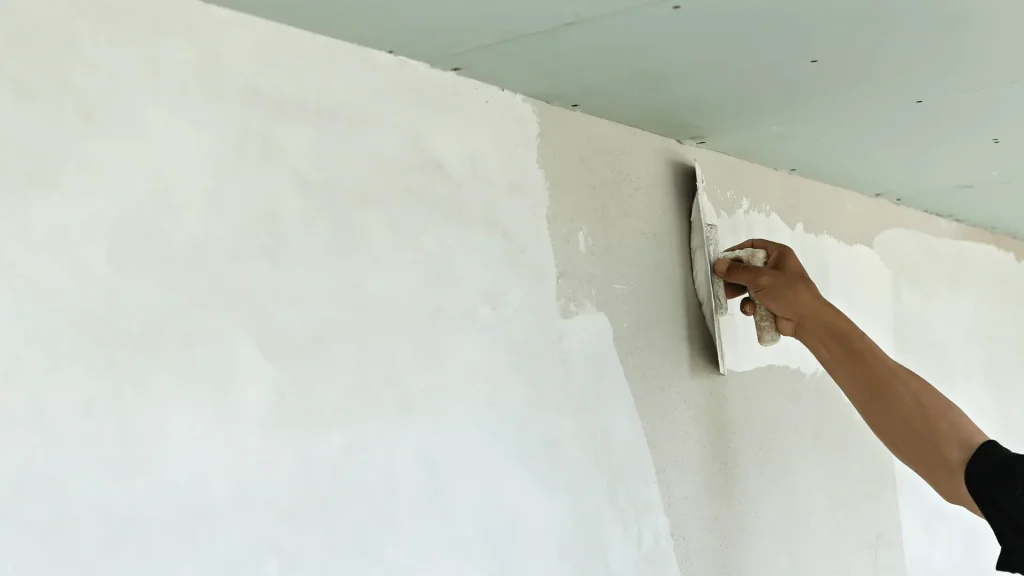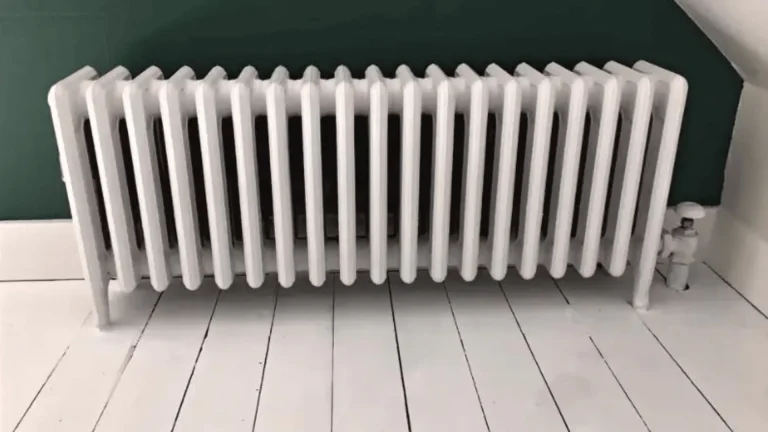Unlocking The Secrets Of How To Paint New Plaster

DIY DOJO is reader-supported. We may earn an affiliate commission when you buy through links on our site. Find out more.
Painting newly plasterboard walls can be a daunting task, but it doesn’t have to be. With the right techniques and supplies, you can easily achieve a professional-looking finish without too much fuss. In this article, we’ll take you through the steps of how to paint new plaster to help you get the best results possible.
Step-By-Step Guide: How to paint new plasterboard walls
1. Make sure the plaster is dry
Before painting on new plaster, it is important to make sure that the plaster is completely dry. Painting over wet or damp plaster can cause the paint to peel off, leaving an unsightly mess. The best way to ensure that the plaster is dry before painting is to wait at least two weeks before beginning any work.
This allows enough time for the moisture and humidity levels in the air to drop and ensures that all of the excess water has evaporated from walls and ceilings. Testing with a moisture meter can also help determine whether or not a wall has dried sufficiently before painting begins.
If a wall has too much moisture present, then it will need more time to fully dry out and be ready for painting.
2. Make a mist coat
A mist coat is an important step when it comes to painting freshly plastered walls. It helps to seal the surface of your wall, prevent any water-based paint from penetrating too deeply and provide a good base for further coats of paint.
Applying a mist coat is easy and can be done with either a paint brush or a roller. Start by diluting some emulsion paint with around 25% water in a separate bucket and mix it thoroughly until you have an even consistency.
3. Prime with a mist coat
To prime your walls with a mist coat, dip the brush or roller into the mixture and apply evenly onto the walls in thin layers. Allow each area to dry for about 15 minutes before applying another layer—the goal is for several layers rather than complete coverage in one go so as not to cause any cracking or blistering on the surface from too much moisture being absorbed in once.
4. Allow the mist coat to dry

It is important to let the mist coat of paint dry before doing anything else. This will ensure that the paint has properly adhered to the new plaster walls and ceilings. Depending on the climate conditions and thickness of the paint, it can take anywhere from two hours up to a day for this process.
It’s best not to rush through this step since it is vital in ensuring that your finished coats of paint go on smoothly and last longer. To test if your mist coat has fully dried, you can gently press a piece of scotch tape against it. If no color comes off onto the tape, then you are all set for adding any additional layers of paint.
5. Apply the top coats
Once you have prepared the new plaster for painting, you can begin to apply the top coats. Before doing so, it is essential to wait a few days and allow the plaster to dry out thoroughly. This will ensure that your paint job looks clean and professional.
When deciding on what type of top coat to use, latex paint is highly recommended because it’s non-toxic and easy to apply with a brush or roller. If you want a more durable finish, using an oil-based coating may be a better option since it can provide extra protection against scuffs and scratches.
As far as primer goes, many professionals recommend using an alkyd-type primer as this will help prevent moisture from seeping into the plaster and causing discoloration.
Can you paint directly on new plaster?

Yes, you can paint directly on new plaster. Before doing so, however, it is essential to ensure that the plaster is fully cured and dried. This typically takes around 4 – 6 days after installation. You should also make sure that the surface of the plaster is sufficiently prepared before painting by cleaning off any dust or dirt with a damp cloth and ensuring that any grease or oils are removed.
Once this preparation has been completed, you can begin painting your new and fresh plaster. When selecting paint for new plaster walls, opt for one designed specifically for use on new surfaces such as an acrylic emulsion or water-based satin finish which provides good coverage and allows for easy application over rough surfaces.
Begin by priming the wall with an appropriate primer and then apply two coats of paint allowing each coat to dry in between applications. To get the best results when painting new plaster always follow manufacturer instructions carefully and take the time to do a thorough job; this will ensure that your walls look their best for years to come!
Do you need to prime the newly plastered wall before painting?
Yes, you need to prime the new plaster before painting. Priming helps create an even base for the paint and prevents moisture from seeping into the wall and making your paint job look uneven. It also helps prepare a newly plastered wall so that any imperfections or cracks can be sealed off before you start painting.
The best way to prime a new plaster wall is to use a high-quality primer such as an oil-based primer, which will help create a smooth finish for the paint and protect it from future damage. Additionally, it’s important to wait at least 24 hours after applying the primer before painting over it.
This gives the primer enough time to dry and creates a better adhesion between the primer and paint so that your hard work won’t go to waste!
Is it best to seal new plaster before painting?
It can be beneficial to seal the plaster before painting, especially in areas where the plaster is particularly porous. This helps to create a barrier between the wall surface and the paint, preventing moisture and dirt from getting into the pores of the plaster. Sealing also helps to prevent any loose particles or powdery residue from discoloring or damaging your finished paint job.
To seal the new plaster before painting, use a primer specifically designed for this purpose. If you choose not to seal your new plaster before painting, you may still get good results by starting with a top coat that is formulated for covering difficult surfaces like raw wood and concrete.
Discover the common culprits behind bathroom ceiling paint peeling and learn effective DIY solutions to fix it once and for all with our comprehensive guide.
Final Thoughts
When painting new plaster, it is important to let the plaster dry completely before painting. This can take a while, depending on the climate and humidity of your area. Generally speaking, it is best to wait at least two weeks for the new plaster to dry out completely before you begin with any painting or priming.
If unsure, test spots in various areas of the wall by touching them lightly – if still damp, leave them for longer. As for what type of paint works best on new plaster, specifically formulated paints work best as they help prevent flaking and chalking down the line when applied correctly with an appropriate primer coat beneath.
It’s also important that whatever paint you choose is highly breathable so moisture from within can evaporate without causing damage or bubbling of the paint surfaces. Finally, make sure to use a brush or roller with quality fibers that will not leave streaks in your finish coat after painting new plaster walls. Be generous but careful with your strokes – this will ensure a smoother finish overall!
If you’re looking for the best anti-mould paints to protect your home from moisture and fungus, check out our comprehensive review of the 7 best options in 2024.






